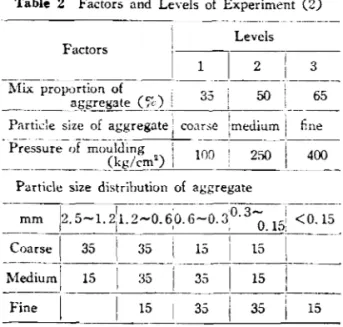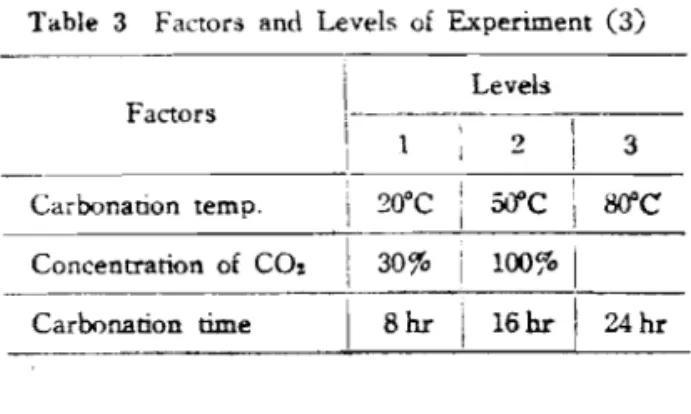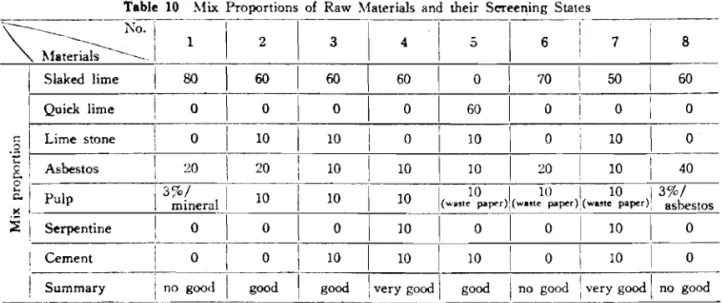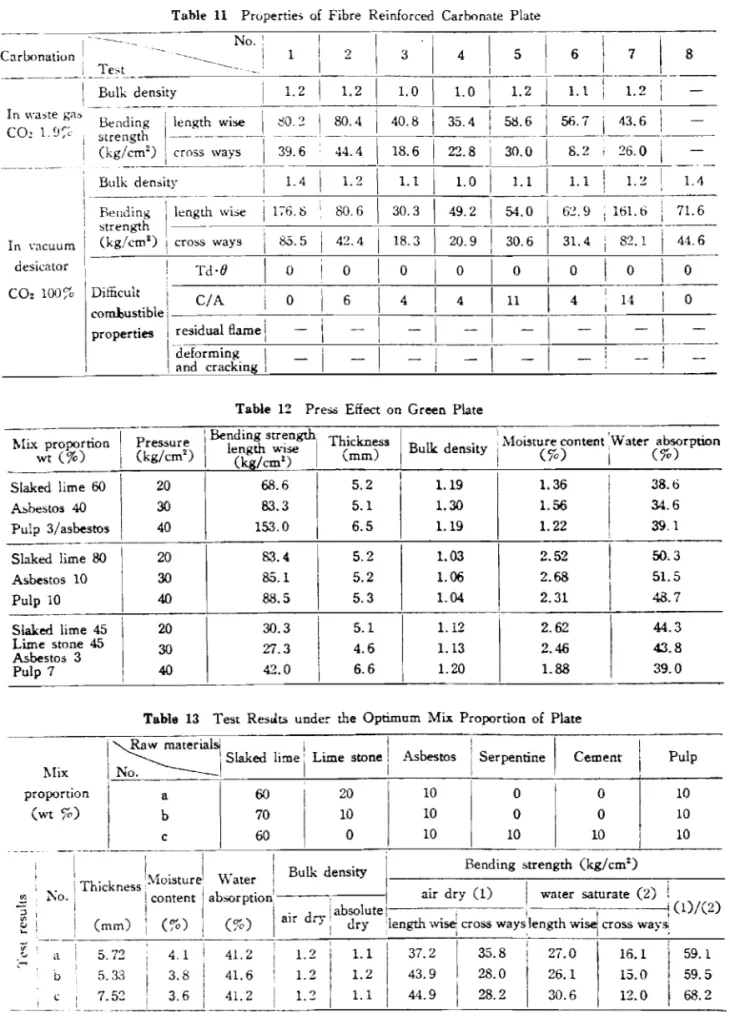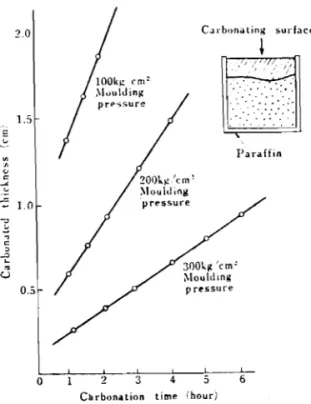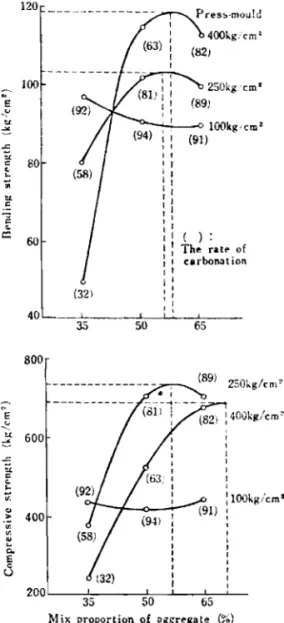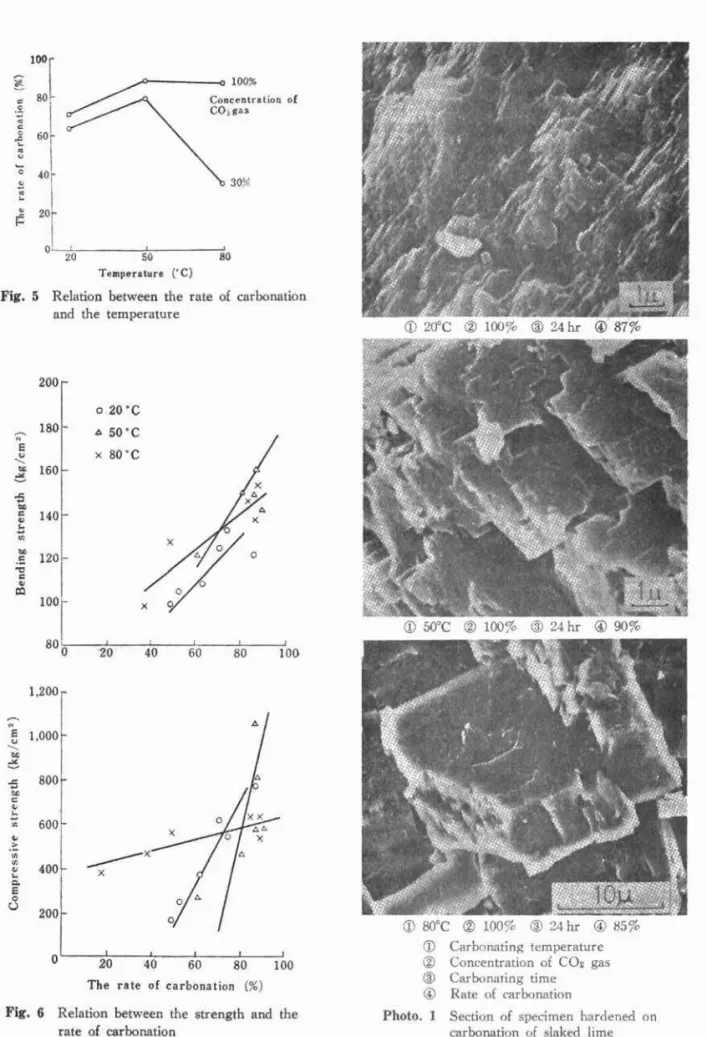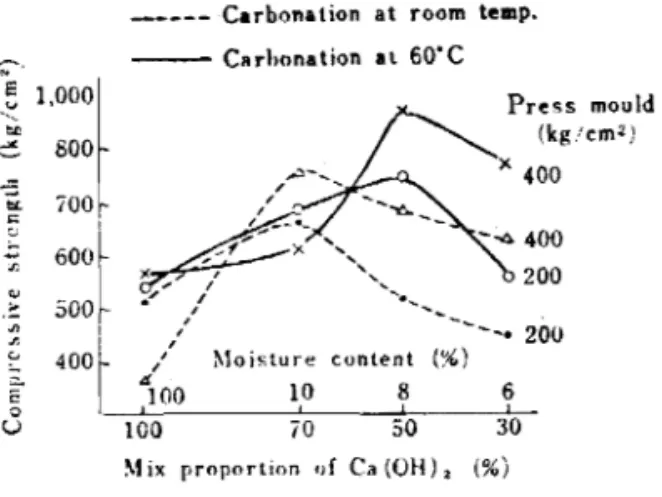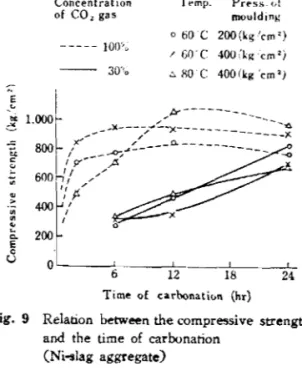Publisher’s version / Version de l'éditeur:
Vous avez des questions? Nous pouvons vous aider. Pour communiquer directement avec un auteur, consultez la première page de la revue dans laquelle son article a été publié afin de trouver ses coordonnées. Si vous n’arrivez pas à les repérer, communiquez avec nous à PublicationsArchive-ArchivesPublications@nrc-cnrc.gc.ca.
Questions? Contact the NRC Publications Archive team at
PublicationsArchive-ArchivesPublications@nrc-cnrc.gc.ca. If you wish to email the authors directly, please see the first page of the publication for their contact information.
https://publications-cnrc.canada.ca/fra/droits
L’accès à ce site Web et l’utilisation de son contenu sont assujettis aux conditions présentées dans le site LISEZ CES CONDITIONS ATTENTIVEMENT AVANT D’UTILISER CE SITE WEB.
Technical Translation (National Research Council of Canada), 1975
READ THESE TERMS AND CONDITIONS CAREFULLY BEFORE USING THIS WEBSITE.
https://nrc-publications.canada.ca/eng/copyright
NRC Publications Archive Record / Notice des Archives des publications du CNRC :
https://nrc-publications.canada.ca/eng/view/object/?id=d11a2d0b-4d78-42b2-88a5-66cad2ce8b8d https://publications-cnrc.canada.ca/fra/voir/objet/?id=d11a2d0b-4d78-42b2-88a5-66cad2ce8b8d
NRC Publications Archive
Archives des publications du CNRC
For the publisher’s version, please access the DOI link below./ Pour consulter la version de l’éditeur, utilisez le lien DOI ci-dessous.
https://doi.org/10.4224/20359220
Access and use of this website and the material on it are subject to the Terms and Conditions set forth at
Investigation of the manufacture of building materials by carbonation
hardening of slaked lime
Matsuda, O.; Yamada, H.; National Research Council of Canada. Division of
Building Research
CANADA INSTITUTE
FOR SCIENTIFIC AND TECHNICAL
INFORMATION
INSTITUT CANADIEN
DE
L'INFORMATION SClENTlFlQUE
ET TECHIVIQUE
NRC / C N R TT-
1807 TECHNICAL TRANSLATION TRADUCTION TECHNIQUE0. MATSUDA AND H. YAMADA
INVESTIGATION OF THE MANUFACTURE OF
BUILDING MATERIALS BY CARBONATION HARDENING
OF
SLAKED LIME
SEKKO T O SEKKAI, (125): 170
-
179, 1973 T R A N S L A T E D BY/
T R A D U C T I O N DETHOMAS WILDS
THIS IS THE TWO HUNDRED AND NINETEENTH I N THE SERIES OF TRANSLATIONS PREPARED FOR THE DIVISION OF BUILDING RESEARCH
TRADUCTION N U M ~ R O 219 DE L A S ~ R I E P R € P A R € E POUR
LA D I V I S I O N DES RECHERCHES EN BWTIMENT
OTTAWA 1975
National Research
Conseil national
PREFACE
There is renewed interest in concrete technology in recent years about the possibility of manufacturing carbonated concrete products. Some work has also shown that it is possible to produce carbonated lime products of good strength. There is a good possibility that in future more effort will be directed to find ways of using effluent gases such as carbon dioxide to produce new products.
This paper describes comprehensive work carried out by three laboratories in Japan to determine the conditions necessary to produce a durable building material using carbon dioxide issuing from lime-burning kilns. Parameters
studied are mix proportions, compaction pressure, temperature, humidity, and addition of different materials.
Ottawa June, 1975 C
,
B.
Crawf ord Director Division of Building ResearchNATIONAL RESEARCH COUNCIL OF CANADA CONSEIL NATIONAL DE RECHERCHES DU CANADA
TECHNICAL TRANSLATION 1807 TRADUCTION TECHNIQUE
Investigation of the manufacture of building materials by carbonation hardening of slaked lime
Authors/Auteurs : 0. Matsuda and H. Yamada
Refrrence/R6f6rence: Sekko to Sekkai (Gypsum & Lime, Jayan), (125) :
170-179, 1973
Translator/Traducteur: Thomas Wilds
Canada Institute for Institut canadien de
Scientific and Technical l'information scientif4que et
information technique
Ottawa
,
CanadaINVESTIG4TION OF THE MANUFACTURE OF BUILDING MATERIALS BY CARBONATION HARDENING OF SLAKED LIME
T h i i paper tlescribes the results of joint study by the authors ancl the researchers of I~ld\:-:rial Research In>:itute of K6c.hi, a i t a and (Fukushima) Fukuoka prefecture.
In order to try to manufacture a building material by means of carbonation of sla!icd lime, the influences of experimental factors on principle properties of the material were investigated.
From thi5 study, effects of mi.; proportion, moulding pressure and, conditions of carb,nation could be clarihed ant1 a pojsibility to make the Luilding material \vrt\ suggested.
This report brings together a summary of the results of joint investigations
-
of three laboratories in
chi,
Oita and Fukuoka (Fukushima) Prefectures,
concerning the manufacture of building materials based on hardening slaked iime by forced carbonation.1. Introduction
In the past, slaked lime has been used as a material for plastering walls. Hardening occurredby natural drying and absorption of C 0 2 gas in the air. But building materials now tend to be prefabricated in plants, and there is thought to be little hope for extending the wet production method to on-site plastering.
What sorts of materials can be manufactured by forced carbonation of
slaked lime? Is it not possible to make practical use of the waste gas in lime- calcining furnaces as a C02 gas source? If coal enterprises were to do this they would have a closed system as far as the materials are concerned, as shown below.
I I Decarbonation C a O I '"03 (calcining)- 1 I I r-- --- -. - - J 1 I -
-
- - - - .- - - I 1 I I,
I Digestion 1 I 1 I I C a O i - H 1 O -Ca(OH)z I I I I 7---.--- - - - J I I I I 1 I I I t 1 1 I C a r b o n a t i ~ ~ ; , ~ ~ , +H,O,
Ca (OH), -&CO,That is, if the waste gas can be used and aggregates can be blended, its utility can be considered in terms of its material properties. These are some of the conceptual starting points.
This report is a summary of the results of experimental investigations aimed primarily at investigating the effects of manufacturing factors on
buil-ding material properties, in order to obtain a perspective on the manufacture of building materials with calcite binder made by forced carbonation of slaked 1 ime
.
2. Carbonation and Hardening of Slaked Lime
--
The authors have made prior investigations(') regarding carbonition of slaked lime, and have indicated that there is an optimum amount of moisture to be added to the slaked lime to ralse its carbonation speed, the initial reaction is rapid and the carbonation proceeds faster the higher the wetness of the atmosphere, and the main mineral formed is calcite, They also believe that the slaked lime carbonation reaction is a solution reaction when there is much llquid water, but that a topological reaction occurs when there is little moisture.
Figure 1 shows the depth to which the specimen is carbonated as shown by zolorimetry using phenolphthalein, the specimens being 30:70 blends oE Sango coal (0.15 mrn maximum size) in slaked lime with 10% water and they were formed under pressure in an axial direction.
It was found that the higher the forming pressure, the slower the per- meation of the gas.
Figure 2 shows the carbonation amount (by the weight method) of hardened pressure-formed bodies of size 20$ x 20 mm after being exposed for one day in a 0.5 litre/min C02 gas atmosphere at ZO'C, and also shows the relation between the forming pressure and the bulk density and compression strength,
Removal of free moisture from carbonation was attempted using CaC12. When the forming pressure is raised, the bulk density and compressive strength
increase up to a point (Figure 2) because carbonation is affected by the rise in forming pressure (that is, a decrease in the formation of the calcite that serves as a binder), and in a formed body with a low percentage of voids, the slaked lime swells by about 12% from carbonation.
Figure 3 shows the strength of the hardened bodies of dimension
4
x4
x 16 cm of silasparite(2) blended wich slaked lime and pressure formed at 10 kg/cm2 to make lightweight building material, and carbonated for eight hours at 4 0 " ~ .The bulk density can be controlled to a certain degree by the mix proportions and the forming pressure,
3. Slaked Lime and Dolomite Svstem (Press Formincz)
~ G h i Prefecture Industrial Technology Laboratory, Messrs
.
Takeo Sakae,
Kiekata Imai, Masamichi Fujiwara and Hisaichi Sekida,The experiments were done by mulling a powder base material such as slaked lime and a fine aggregate such as dolomite with prescribed amounts of water,
compressed in metal molds (2 x 2 x
8
cm) to a height of 16 + 0.5 m , Then thepressure-formed samples were inserted into a tank ($
45
x45
cm) at constant temperature and constant pressure, and carbonation was carried out at a ?rescribed concentration of carbon dioxide gas introduced at a flow speed of 320 ml/min. For regulating the moisture inside the tank, calcium chloride or water was placed at the bottom, and the humidity was adjusted, The amount ofcarbonation was determined by thermogravimetric analysis,
3.1 Effects of type of base material
Three series of experiments were carried out.
A
60:40:9 mixture of base material, aggregate and added water was made at a pressure of 200 kg/cm2, and the carbonation conditions were low moisture, 20°C, and a gas concentration of 100%. The results showed carbonation amounts in he range of 31-
96%,bending strengths of 39
-
159 kg/cm2, and compressive strengths of 115-
848
kg/cm2.The amount of carbonation, bending strength and compressive strength of the base materials increased in the order Si + Hn > S i + DP > Si > Sa, but this effect was about 10% for the carbonation amount and within about 30 kg/cm2 of the bending strength (Table
1).
With the aggregate only the bending strength was meaningful, the dolomite being of somewhat higher strength. Subsequentexperiments were made with mixtures of slaked lime (elemental lime) and dolomite aggregate.
3.2 Effects of the aggregate and the forming pressure conditions
The factors and levels of the experiment were allotted in an orthogonal arrangement L~~ (3' 3), and the carbonation conditi-ons were low moisture, 30'~ and 24 hours. The characteristic values obtained were 27
-
94% carbonation rate,46
-
123 kg/cm2 bending strength, 233-
797 kg/cm2 compression strength,1.61
-
2.24 bulk specific gravity, and < 0.25 % shrinkage rate. As the particle size of the aggregace varies from fine to medium to coarse the bending strengthincreases, while the amount of aggregate and the forming pressure are
quantitative factors and thus their levels were arranged at equal intervals,
w'h3-i
we assumed the strength and the amount of aggregate at which the strength is maximum, we obtained a response curve from an orthogonal polynomial for the strength, and performing differential calculus for the amount of aggregate, we got, for the bending strength, an amount of aggregate of 56.6% and amaximum strength of 103 kg/cm2 with the forming pressure of 250 kg/cm2, these being respectively 58% and 119 kg/cm2 with the
400
kg/cm2 forming pressure, and for the case of compressive strength we got respectively 57.3% and 743 kg/cm2 at a forming pressure of 250 kg/cm2 and 71.8% and 682 kg/cm2 at the 400 kg/cm2forming pressure. From these facts it is believed that the phenomenon of strengthening of the carbonated hardened bodies is a composite action of the forming pressure on the packing density of the formed body and the binding force oftfie calcium carbonate formed and the aggregate. From these results it was concluded that a forming pressure of 250 kg/cm2 and an amount of aggregate
(fine grained) of 55% would be suitable for both types of strengthening i~ subsequent tests.
3.3 Effect of the carbonation reaction conditions
The factors and levels of the experiment were arranged in three sets, and the characteristic values obtained were carbonation rates of 19
-
91%, bending strength 83-
183 kg/cm2, compressive strength 173-
1,055 kg/cm2, and moisture absorption 8-
12.5%. The carbonation advanced at a nigher level at 2 0 " ~ and 50°c, but at 80°c when the gas concentration was 30%, the carbonation declinedmarkedly, and even with a gas concentration of lOOZ it was in the same order as at 5 0 " ~ . The moisture absorption rate declined with the progress of carbon-
ation. The compressive strength showed different behaviour depending on the reaction temperature, the maximum strength being shown at 5 0 " ~ . This trend was also found in che bending strength, but to a lesser degree, According to
scanning electron microscope photographs of the materials carbonated at
insufficient at 20°c, there were calcite state crystals of a few microns at
~ G ' C , and they developed to about 10 microns at 8 0 ' ~ . This is inferred to play a role in the dependence of temperature on the strength.
j . i Effect of variations in the carbonation method
The factors and levels were arranged orthogonally as L I 6 (215), The characteristic values obtained were 32
-
71% carbonation, 41-
121 kg/cm2 bending strength, and 165-
287 kg/cm2 compressive strength, These character- istics depend strongly on how the reaction was carried out, reaction temperature, the early humidity, the moisture added and their combined actions. This is believed to be so because the effect of moisture in the reaction system is related to the progress of the carbonation reaction, so that one factor alone does not account for all the effects.3.5 Effect of addition of mixing materials
We investigated the effect of additions of high molecular materials and Eibres, and it was possible to raise the wear resistance with 2Z additions of PVA and SBR, and to raise the impact strength by 5
-
10% additions of asbestos.3.6 Optimum factors for manufacturing and comparison with building materials on the market
Table 5 shows the factors that give carbonated hardened bodies high
strength. Upon comparing building materials manufactured under these conditions with the characteristic values of commercial butlding materials measured under nesriy the same conditions, the manufactured trial materials displayed sufficient strength, and also were easily broughtt~a lustre by surface polishing and could
4.
Slaked Lime-Waste Powder Systems (Press Forming1-
Oita Prefecture Industrial Technology Laboratory, Messrs. Shikami sat:, Eiiroshi Miki, Wataru Doi, Akimoto Todaka and Yoshie Kiyomizu.
4.1 The assignment was to make carbonated hardened bodies with mixtures of
-
slaked lime and waste powders. The waste powders employed were limestone powder and nickel slag (electric furnace method). The particle size of the powders was less than 250
u.
The experiments were done by mixing slaked lime and the powder, adding
considerable water and press forming, after which they were forcefully carbonated and hardened inastream of carbon dioxide gas. Investigations were made of the relation between strength and conditions such as blending, forming and the react ion.
4.2 Preparing the materials
The powders were crushed in a pulverizer and screened in standard screens of 2 5 0 ~ , 1 4 9 ~ and 7 4 v to the sizes shown in Table 2 [sic
-
8 intended].The powders thus prepared were blended with 30%, 50% and 70% slaked lime, and
4
-
12% water was added.4.3 Reaction conditions
The materials were pressed at 100
-
700 kg/cm2 in metal molds (2 x 2 x 12 cm), and then placed in a reaction vessel through which carbon dioxide gas was passed.The reaction temperatures were from ambient to 80°c, and the interior of the vessel was at normal pressure and in a wet condition. The carbon dioxide gas concentrations were 100% and 30%.
4 . 4 -- G r a i n s i z e g r a d i n g and m o i s t u r e a d d i t i o n
I n r e g a r d t o g r a i n s i z e g r a d i n g , medium g r a i n s i z e s ( c l o s e t o maximum p a c k i n g ) gave h i g h s t r e n g t h , b u t b l e n d s c l o s e t o a s i n g l e g r a i n s i z e were n o t good.
The a d d i t i o n of w a t e r h a s no r e l a t i o n t o t h e e a s e o r d i f f i c u l t y of f o r m i n g , and when we d i s r e g a r d f o r m a b i l i t y , t h e s u i t a b l e amount of m o i s t u r e r e q u i r e d f o r c a r b o n a t i o n h a r d e n i n g i s a b o u t 6% w i t h medium g r a i n s i z e , and a b o u t 8% w i t h f i n e g r a i n s . S i n c e t h e w a t e r added a d h e r e s t o t h e g r a i n s i n t h e formed body o r e n t e r s t h e i n t e r s t i c e s between t h e g r a i n s , i t i s r a i s e d o r lowered depending
Dn t h e s i z e of t h e powder g r a i n s ( d i f f e r e n c e i n s p e c i f i c s u r f a c e a r e a ) and t h e
forming p r e s s u r e . P r o d u c t s w i t h l i t t l e added w a t e r gave b e t t e r c a r b o n a t i o n .
4.5 Slaked l i m e m i x i n g
The s l a k e d l i m e mixing i s r e l a t e d t o t h e amount of r e a c t i v e calcium
c a r b o n a t e . The s l a k e d l i m e i n c r e a s e s i z i vol.ume (about 1 2 % ) by c a r b o n a t f o n , t h e
s p a c e s i n s i d e t h e formed body a r e f i l l e d , and t h e g r a i n s a r e t i g h t l y compressed t o g e t h e r .
Khen t h e s l a k e d lime i s 100% I t s s w e l l l n g p r o c e e d s i n t h e same way, b u t c r a c k i n g o c c u r s i n t h e formed body rind s t r e n g t h d e c l i r i e s , b u t p r o d u c t s of h i g h s t r e n g t h c a n be o b t a i n e d by u s i n g a s u i t a b l e mixing of s l a k e d l i m e . A s shown i n F i g u r e 7 , w i t h r e a c t i o n t e m p e r a t u r e s from room t e m p e r a t u r e t o 4 0 ' ~ a s u i t a b l e mixing i s o b t a i n e d w i t h 70% s l a k e d l i m e , w h i l e a t 60
-
8 0 ' ~ i t i s a b o u t 50%.4.6 Forming p r e s s u r e
The d e n s i t y of t h e formed body i n c r e a s e s as t h e forming p r e s s u r e becomes h i g h e r . S i n c e i t i s d i f f i c u l t f o r c a r b o n a t i o n t o o c c u r u n l e s s t h e r e a r e i n t e r - s t i c e s i n t h e formed body, t h e c a r b o n a t i o n r a t e w i l l d e c l i n e i f t h e forming p r e s s u r e i s t o o h i g h . A forming p r e s s u r e of 400 kg/cm2 i s s u i t a b l e . An example i s g i v e n i n F i g u r e 8 .
4.7 Reaction temperature and reaction time
Extending the reaction time during the carbonation reaction raises the strength and carbonation rate. In bodies made under high forming pressure the carbon dioxide gas and the reaction-feeding water pass throuph with difficulty, and when the reaction time is too short the carbonation occurs only on parts near the surface, and it is difficult to obtain strength. When the reaction time is lengthened, penetration proceeds into the interior resulting in higher strengths.
The carbonation reaction of the slaked lime produces carbon dioxide gas and an equivalent amount of water, and since it is an exothermic reaction, the water is converted to steam and leaves the specimen to fill the reaction vessel and makes it wet. The compact is therefore continuously carbonated without water drops adhering to its surface. At reaction temperatures under 4 0 " ~ the
reaction vessel is in a wet state due to the water produced by the reaction. At temperatures over 6 0 " ~ the specimen dries and there is insufficient moisture
for carbonation, and it will be necessary to add water.
With a high temperature and 100% carbon dioxide gas, the carbonation will advance rapidly in the initial reaction stage and will generally be completed after 6
-
12
hours resulting in a product of high strength.With a high temperature and 30% carbon dioxide gas, the carbonation advances slowly, and hence it is necessary to perform the reaction for more than
24
hours to achieve high strength (see Figure9).
4.8 The carbonation amount and strength
Generally the strength increases with the progress of carbonation, but when the reaction takes place at too high a temperature there is,a tendency for products made by high forming pressures to decline in strength. This is perhaps
due LO the strains~curring inside the hardened body resulting from the growth
When hardened bodies were cut and stained with ~henolphthalein, carbonation was found to progress from three layers to a single layer, as shown in Table
9.
We also investigated the progress of the carbonation by determining the amount of carbonation by thermobalance.4.9. Conclusion
The carbonated hardened bodies with slaked lime as the basic material and limestone powder system, had compression strengths of 700
-
1,000 kg/cm2, bending strengths of 70-
100 kg/cm2, bulk specific gravity of about 2, and aoisture absorption of about 11%; the nickel slag system had compressivestrengths of 800 - 1,100 kg/cm2, hending strengths of 70
-
150 kg/cm2, bulk specific gravity of about 2.1, and moisture absorption of about 1 1 2 , and it k7as possible to make products with strengths higher than are obtainable for concrete products.5.
Lime-Limestone System (PapermakindFukuoka Prefecture, Fukushima Industrial Technology Laboratory, Messrs.
- -
Mizutoshi Koga, Tashiro Otsubo, Hideichi 'Kamei and Yasusane Okuda.
5.1 Introduction
Asbestos cement sheet and pulp cement sheet have been made in the past by wet building material manufacturing methods using cement as the base material. These investigations concerned a wet sheet building material manufacturing method (papermaking method) with lime as the base material,
5.2 Experiments
(1) Samples
Slaked lime: Nippon Sekkai (Nippon Lime) (specially selected slaked lime).
-
Quicklime: Furutegawa Sangyo (Furutegawa Industries). Limestone: Nichibe
Kagaku (Nishibe Chemicals) (for road building). Asbestos: Johns Xanville (6D-30). Pulp: Kogami, bleached kraft.
(2) Figure 10 shows the course of the experiments.
The experimental method was to beat pulp immersed in water in a beater, then adding asbestos and beating for a short time and dehydrating on an 80 mesh metal screen. The fibre was fed into a mixing tank and slaked lime and limestone ~ o w d e r were added and agitated. It was uniformly mixed to a concentration of about
4%,
1 ppm of a polyacrylamide type cohesion agent was then added, and this resulted in a weak flux. Then water was added to the mixing tank at 3concentration of about 1%, it was placed in the wet machine, the material
scooped up on a cylinder was moved to felt ( ? ) , dehydration was done by suction and
i c
was wound on a making ( ? ) roll, When it was of a prescribed thickness, it was cut and made as a raw sheet. This raw sheet was cut, pressed under prescribed pressures, dried at 105'~ for more than4
hours, and the watercontent was controlled. Then the samples were placed in a vacuum drier, carbon dioxide gas was introduced at close to a vacuum, and the pressure was brought back to nearly normal. When the carbonation reaction began, the gas Fressure declined, and carbon dioxide gas was again introduced, hhen this o?er;_tion was repeated and the pressure did not decline even after standing For a lang period of time, the samples were removed. Some of the samples were given continuous ~ r y i n g and carbonation at a pulp cement sheet plant (C02 concentration 1.9% under heavy oil combustion, furnace interior temperature 160°C, treatmene time 31 minutes), The samples were then subjected to the following physical tests.
(1) Bulk specific gravity, moisture absorption rate, bending strength: (JLS A 5415 based on pulp cement sheet).
(2) Combustibility test: JIS A 1321
( 3 ) Differential scanning calorimetric analysis-thermobalance: Rigaku
r . j T e s t r e s u l t s
( I ) Mixing p r o p o r t i o n s and papermaking c o n d i t i o n s (Table 1 0 ) . ( 2 ) R e s u l t s of p h y s i c a l t e s t s (Table 1 1 ) .
( 3 ) R e s u l t s of t e s t s on e f f e c t of p r e s s i n g (Table 1 2 ) .
(4) R e s u l t s of t ' e s t s on optimum b l e n d p r o p o r t i o n s (Table 1 3 ) . ( 5 ) DSC-TG c u r v e s ( F i g u r e 1 1 ) .
5 . 4 D i s c u s s i o n
( 1 ) T a b l e 11 and T a b l e 1 3 show papermaking i s p o s s i b l e w i t h a wet machine w i t h p r o d u c t s c o n t a i n i n g 50% o r more of s l a k e d lime and u s i n g a s b e s t o s and p u l p , When t h e amount of a s b e s z o s w a s o v e r 202, t h e s l a k e d l i m e and a s b e s t o s became s t i c k y , t h e d e h y d r a t i o n r a t e d e c l i n e d , t h e c y l i n d e r was f o u l e d , b l a n k e t s t a i n s a p p e a r e d and papermaking was d i f f i c u l t . S i n c e t h e raw s h e e t was s o f t i t was d i f f i c u l t t o h a n d l e , b u t t h i s was overcome w i t h l i m e s t o n e b l e n d i n g . The cement a d d i t i o n was b e n e f i c i a l f o r s t r e n g t h , b u t mars t h e w h i t e n e s s of t h e l i m e and i s n o t d e s i r a b l e .
( 2 ) E f f e c t of c o n n e c t i n g p r e s s u r e
A s s e e n from T a b l e 1 2 , t h e p r e s s u r e d i d n o t have much i n f l u e n c e up t o
30 kg/cm2, b u t a t 40 kg/cm2 t h e bending s t r e n g t h i n c r e a s e d g r e a t l y . T h i s e f f e c t was e s p e c i a l l y marked a s t h e added amount of a s b e s t o s i n c r e a s e d .
( 3 ) P r o d u c t c h a r a c t e r i s t i c s
-
T a b l e 1 2 and T a b l e i 3 show t h a t t h e m o i s t u r e c o n t e n t was v e r y low and was I - 4% f o r a l l samples, and w a t e r a b s o r p t i o n s t a b i l i z e d w i t h i n a narrow r a n g e around 40%, showing hFgh v a l u e s a s a b u i l d i n g m a t e r i a l c o n t a i n i n g f i b r e s . The t e n d i n g s t r e n g t h depends g r e a t l y on t h e amount of a s b e s t o s , b u t t h e v a l u e s ob- t a i n e d a r e h i g h e r t h a n t h o s e f o r p r i o r i n t e r i o r f i n i s h i n g f o r a i r d r y i n g t i m e . However, a s i s s e e n i n T a b l e 1 3 , t h e s t r e n g t h d e c r e a s e d w i t h w a t e r a b s o r p t i o n . T h i s i s t h o u g h t t o have a s i g n i f i c a n t r e l a t i o n w i t h t h e amount of remaining slaX?d lime ( c a r b o n a t i o n r a t e ) . F i g u r e 11 shows t h e amount of u n r e a c t e d s l a k e d lime i n s a n p l e s a f t e r c o m p l e t i o n of c a r b o n a t i o n , and i t may w e l l b e t h a t s l a k i n g J c c u r s i n t h e wscer and t h e r e i s a d e c l i n e i n s t r e n g t h due t o i t ,
(4)
CombustibilityThe products satisfy all of the conditions for Td-0, CIA, residual flame, defornation and cracking prescribed in the JIS and are thought to have sufficient incombustibility, and can be classified among the first class of incombustibles.
(5) Concerning the carbonation
In the DSC curves in Figure 11, there are rather broad exothermic peaks between 320 and 3 5 0 " ~ whether the samples are carbonated or not, suggesting the combustion of pulp fibre, and the TG curves also show similar curves indicating weight changes. The small 2xothermic peaks in the vicinity of 420°c and the slight weight increase were not anticipated, and there seems to be a need for further investigation that would consider the reaction between the unreacted slaked lime and the carbon dioxide gas formed. The endothermic peaks a t
470
-5 5 0 " ~ show the presence of slaked line, but even in the carbonated samples faint peaks appear, indicating that complete carbonation does not occur.
5.5 Conclusion
It is possible to use slaked lime in papermaking and to make fibre blends in wet machines, and the carbonated and hardened bodies thus produced satisfy the requirements for interior finishing building materials. However there are many problems connected with increasing the strength, with its resistance to water and promoting the carbonation reaction. Investigations are now in prosress
to establish a continuous
dry
carbonation vrocess utilizing waste gas for commercialization.6. Summary
There are still problems connected with durability and water resistance of burlding materials made by the carbonation of slaked lime, but these problems
s r e both being investigated, and they should be settled soon. It is not
anticipated that either of them will be ~roblems from the standpoint of actual
c s e .
We will be satisfied if this report can give some clues to the development
c f a new field of utilization for lime, to the use of blendable unused natural resources, and the development of new building materials, as well as make a contribution to the advance of related fields of inyestigation.
In conclusion, it should be noted that these investigations were made as part of a fiscal year 1971 Technical Development Research Fund Supplemental Project of the Smaller Enterprises Agency.
References
1. Matsuda, Yamada Sekko to Sekkai (Gypsum R Lime), (97): 3-10, 1968. 2. Hirosue, Matsuda, Koga, Kitsutsume Yogyo Kyokai Shi (Journal of thc Ceramic Association of Japan), 79 (915): 435-439, 1971.
I
Bonding material
I
SiI
Sa S i DP (Si HDTable 1 Factors and Levels of Experiment (1)
~ g g r e i a t e ~ L i ~ o , , e ' ~ l o r n i t k
I
Carbonation time3hr
I
9 hri
27 hrI
M hr--
-Factors
Si; Slaked lime (simple) Sa; Slaked lime (salt)
Si
.
DP; Si : Dolomite plaster= 1 : 1Si
.
HD; Si: Half burned dolomite (7303C)=1 : 1- -. -- -
Levels
---,
--1 , 2 1 3 4
Table 2 Factors and Levels of Experiment (2)
I Levels Factors ! Mix proportion of
i 1 I 2 i 3
-- aggregate ( 8 ) ' -- - -- - 1Particle size of aggregate: coarse ;medium firle
Particle size distribution of aggregate I
mrn I 2 . 5 - l . ~ i ? - 0 . 6 , 0 . 6 - 0 . 3 ~ ' ~ ~ <O. 15 1 .
Coarse1 35
1
35I
l jI
15r--
Table 3 Factors and Levels of Experiment (3) Leveh Factors I I
,
20°C;
jipc,
M C Carbonanon temp. , Concentration of COz 30%i
100%I
Carbonation time/
8 h r I 16 hr1
24 hrTable 4 Factors and Levels of Experiment (4)
I
LevelsFaztors
I
, 1 1 2
Carbonation temp 30°C
1
mCCarbonation type
I
continuous1
closed Tne former humidity1
low1
high The latter humidity 1 low ' highI Slolstxre content
I
20%/
25% Continuous: carbonated under C0z gas flow Closed : carbonated under 0.5 kg/cma pressure ofCOr
T h e former humidity: humidity during the former 4 hrs
T h e latter humidity: humidity during the latter 4 hrs
Table 5 Optimtim Condition of M a n u f a w i n g
Factors Levels
I
-- -. 4 -
Material I slaked lime-dolomite ---
Aggregate
:
hne particle 5 5 4 0 % - Xloulding preseure 2 3 kg/cmz- - - - -- - --
hloisture content , ?G/slaked lime
Humidity 1 low during the former term
- ---
Carbonation type I clojed (or continuous)
Table 6 The Properties of Carbonated Specimen Compared with Some Bailding llaterial on the Market --- \ . , . Properties i i \\-ate, I I
i
I Bulk density
/
abmrpiion Bending ! Compressive ~ A b r a ~ i o n i n d w Impact.-. -.. strength
I
stren& ( (mg/'
strengthswimens
(g/ml) (kg/cmz) (kgirrn2) 1 1003 cycles)1
(kg/cm)---- - -- -. . .
Carbonate h n d 2 . 3
1
3.3I
160 I (%IN)* i(a)**
specimen -. -
'
5203-1
27 1Iarble (natural)1
2.7 01
701
620 111091
55 -- - - Cement mortar I ~ ~ / CztidayJ
= ~ ~ 2.1 , 9.2 j 120,
510 1 7000* mired with poly-vinylacetate emulsion ?%/slaked lime and aggregate mix
**
mixed with asbestos fibre lO%/slaked lime and aggregate mixTaMe S Panicle Size Distribution of Aggregate Table 7 Raw Materials for Experiment
M a t e d
1
Reference Bond(
slaked 1,me1
industrd high darr- --- p r t i c l e size (P)!
I
! 250-149,
149-741
71-0 - Aggregate Ipowder of produced at Tsukumi city, lime stone Olta prefecture
--- - ---
Ferro-nickel slag Ni-slag SiOz 51%, RrOc 6 % ,
- - - --- - - - 3fgG 37% --
t Clty
service/
Water I water
--- -
COa gas industrial
G a r s e r 80 Medium finer
I
I::
10 1 0 10-Table 9 The Rate of Carbonation and the Strength oi Carbonated Specimen Carbonation time (hr)
Carbonation temp. ('C)
+kE+-+-
Coloured section by phenol-phthalein
lml
1
--The r a t e of --- carbonation of inner s e c t i o ~ ~ % / - % ~
Table 10 hlix Proportions of Raw Materials and their Screeninn States -
- --- --
.
.
hfaterials 1
I
1T h e r a t e of carbonation of o u t e r section
(%)I
851
S l a k d l i m e 801
601
60
1
601
01
70 501
60I Q u i c k l i m e
!
0 1 0/
0 1 0 6 0 0i
0 0- -- - -
T h e r a t e of carbonation of all section (%) Compressive strength (kg/cm')
--
Bending s t r e n g t h (kg/cm2 ) 82/
852
1
Lime stone!
O 10...
, I5
,
1 , AsbestosI
201
20 49 728 156 64 1,031 165 -2
1
~ u l pI
3%! rnlneral I 10 80 978 140 .-
E
/
SerpentineI
O1
O I1
Cement'
I0 1
O \ I O ~ I O 0~ i ~ 1 O0 ~0I
Summary;
no good/
good1
good1
very g o d1
goad1
no good very good, noI
goodTable 11 Propertie, of Fibre Reinforced Cartmnate Plate - - - - - _ No. ' I . -.
-.
1 1 1 2 1 3 / 4 1 5 / 6 / 7 ( 8 _ _ r e i t - - ---- -i
-- - - -1
Bulk density1
1.2 1.21
1.0 , . . . - - - -- In iva3te gnaBending 1 length wise
/
$0 I!1
80.41
40.8 COr I 9:; , strength (--.----; - - --i
(hg/cm2)1
cross ways/
39.6 44.4(
18.6 -- - - PA--- - -- - 1 Bulk den3ity1
1.4 1.21
1.1 In vacuum desicntorcoz
100% Rt,nc!~ng length i v i x/
176 b 80 61
30.31
49.21
54.0I
G.'9 161. b,
71.6 strength --- (kg,lcmP) I cross ways 1 *.5;
42.41
18.31
20.91
30.61
31.4,
S'. 1/
41 6 D~liicult 1 C/A 1 0 6 4 1 1 ( 1 1 4 1 1 I 1 0 combustible 1properties
/
residual flame/
a- 1
- 1 - 1 - 1 - 1
- 1
- /
-1
d&rminp -- 1
- 1
- 1
- 1
- iI and cracking
1
- 1
-Table 12 P r e s Effect on Green Plate
----
;
&"ding 'mend ThicknessI
Buk density , Moisture content 'water absorption hhx proportion1
P r e s ~ u r e,
lenprh m7wwt (%I j (lig/cmz) 1 (kgjcme)
1
(mm)1
1
(%) 1(PI
Slaked lime M
1
20 Asbestos 40 P u ! ~ 3/asbest~s Slaked lime 80(
20 Asbestos 10 30 Pulp 10 1 4 0 -- Slaked lime 45 I 20 Lime stone 45 Asbestos 3 30 Pulp 7Table 13 Test Resdts under the Optimum Mix Proportion of Plate
I
Slaked 1lrnei Lime stone Asbestos Serpentine
(
Cementi
I Pulp hlixj
proportion 60 j 201
10 0 10 (wt $1I
10 0i
- I 10 I;
1
-.
.
.
I i sIwater
!
ui
Rending strength (kg/cm2)1 h~ckness - - - - - - -
v: KO.
-
bsorption'---1
air dry (1)1
water saturate (2) !d 1 ,absolute 1 --
-a i
1 ('>/(2>2.0
I
/
C a r b o n a t i n g 1 surfacepressure
300L.g 'cm'
Aloulcl~nu p r e s s u r e
Fig. 1 Carbonated thickness of specimen
d
CaCO, -30 : 7 0
,
hloisture content 10%;m1x 1
R.H=Oo4, Carbonation Pahi-s 200 '
6k
1,dW Pressure of moulding (kg,,cmz)Fig. 2 Corelation of the rate of carbonation, the compressive strength and the pressure of moulding (figures in Fig. are bulk density
I
I lOOr
Ca(OH), : P e r l i t e
/
B u l k d e n s i t y (g/cmS)
Fig. 3 Compressive ~ u e n g c h of light weight
carbonzte concrete
200 1 I I I
35 50 65 Mix proportion of aggregate (?A)
Fig. 4 Relation behveen the strength and the mix proportion
Fin.
o!
20 50 80
Temperature ('C)
5 Relation between the rate of carbonation and the temperature
O'
zb
i0 QO 80 I l b 0 The rate of carbonation (%) Fig. 6 Relation between the strength and therate of carbonation
@ Carbonating temperature GI Concentration of C o o gas @ Carbonating time @ Rate of carbonation
Photo. 1 Section of specimen hardened on carbonation of slaked lime
---
Carbonation a t room temp. -.-
Carltonation a t 60'C Press mould '\ 200 '-.
-_
--'-.
200 ,'I > l o i s t u r e content ( X )-
5 c 100 10 66
100 70 50t
30L
MIX proportton of Ca ( O H ) , ( % jFig. 7 Relation between the compressive strength and the mix propclrtion
(lime stone aggregate)
---
The rate of carbonation---
Compressive strengthPressure of moulding (kg/cmz)
Fig. 8 Relation between the compressive strength
and the presure of mouIding
Concentration Trrnp. Press ~ , f
of CO, gas moulding
0 :
-6 12 18 24
Time oE carbonation (hr)
Fig. 9 Relation between the compressive strength
and the time of carbonation
(Ni-slag aggregate)
Fig. 10 \ l a n u f ~ c t u r i n ~ process of fibre reinforced carbonate plzre a brfore carbonallon a a f l c r carbonation
